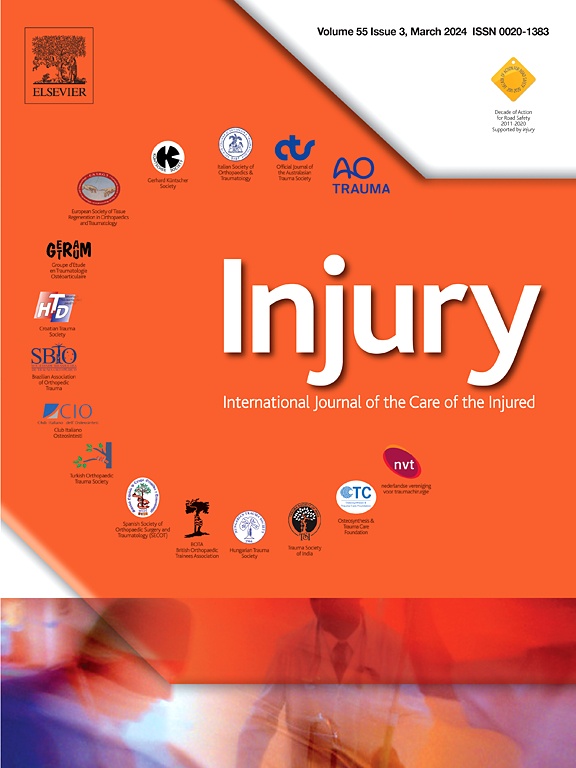
Improved quality of life with elastic compression stocking treatment of ankle sprains

Improved quality of life with elastic compression stocking treatment of ankle sprains
Elastic stockings or Tubigrip for ankle sprain: A randomised clinical trial
Injury. 2012 Jul;43(7):1079-83. Epub 2012 Feb 23OE EXCLUSIVE
Dr. C.N. McCollum discusses the effectiveness of elastic compression stocking in the treatment of ankle sprains.
Synopsis
36 patients with ankle sprains were randomized to receive a treatment using an elastic compression stocking or a standard treatment with Tubigrip tubular bandage. The primary outcome measure was the difference in health-related quality of life (QoL) between the two groups. Results indicated that the elastic compression stockings were more effective in improving functional recovery and health-related quality of life in patients following an ankle sprain.
Was the allocation sequence adequately generated?
Was allocation adequately concealed?
Blinding Treatment Providers: Was knowledge of the allocated interventions adequately prevented?
Blinding Outcome Assessors: Was knowledge of the allocated interventions adequately prevented?
Blinding Patients: Was knowledge of the allocated interventions adequately prevented?
Was loss to follow-up (missing outcome data) infrequent?
Are reports of the study free of suggestion of selective outcome reporting?
Were outcomes objective, patient-important and assessed in a manner to limit bias (ie. duplicate assessors, Independent assessors)?
Was the sample size sufficiently large to assure a balance of prognosis and sufficiently large number of outcome events?
Was investigator expertise/experience with both treatment and control techniques likely the same (ie.were criteria for surgeon participation/expertise provided)?
Yes = 1
Uncertain = 0.5
Not Relevant = 0
No = 0
The Reporting Criteria Assessment evaluates the transparency with which authors report the methodological and trial characteristics of the trial within the publication. The assessment is divided into five categories which are presented below.
4/4
Randomization
3/4
Outcome Measurements
4/4
Inclusion / Exclusion
4/4
Therapy Description
4/4
Statistics
Detsky AS, Naylor CD, O'Rourke K, McGeer AJ, L'Abbé KA. J Clin Epidemiol. 1992;45:255-65
The Fragility Index is a tool that aids in the interpretation of significant findings, providing a measure of strength for a result. The Fragility Index represents the number of consecutive events that need to be added to a dichotomous outcome to make the finding no longer significant. A small number represents a weaker finding and a large number represents a stronger finding.
Why was this study needed now?
Ankle sprains are common injuries that frequently result in long-term complications. These complications include decreased function due to persistent pain and instability, as well as a decreased health-related quality of life (QoL). Compression plays a part in the standard treatment of soft tissue injuries, but its role has not been adequately examined. This study evaluated the use of compression stockings, compared to tubular bandage (Tubigrip), in improving the functional outcomes and QoL of patients following an ankle sprain.
What was the principal research question?
What are the health-related quality of life and functional outcomes in patients with ankle sprains, when treated using class II below-knee elastic compression stockings compared to Tubigrip tubular bandage?
What were the important findings?
- Looking at the injured ankle of the elastic stocking group, the mean (95% CI) circumference at baseline was 23.5 (23-24) cm; 22 (22-23) cm at 4 weeks, and 22 (21-22.5) cm at 8 weeks (p<0.001). The Tubigrip group had a mean circumference at baseline of 24 (23-25) cm; 24 (23-25) at 4 weeks, and 24 (23-24.5) cm at 8 weeks (p<0.001).
- The elastic stocking group had significantly improved mean AOFAS and SF-12v2 scores by 8 weeks. The ES group improved by 99 (8.1) for the AOFAS and 119 (118-121) for the SF-12v2. The Tubigrip group had an improvement of 88 (11) for AOFAS and 102 (99-107) for SF-12v2 (p<0.001).
- The elastic stocking group had significantly improved range of movement of 79 deg (74-83 deg) by 8 weeks from a mean of 33 deg (25-41 deg) at baseline, compared with the Tubigrip group which had an improvement of 56 deg (50-62 deg) from a mean of 27 deg (21-33 deg) at baseline. (p<0.001)
- On 34 duplex images examined at 4 weeks, no patients were diagnosed with deep vein thrombosis (DVT)
What should I remember most?
The elastic stocking (ES) treatment for ankle sprains resulted in significantly improved recovery, compared to the Tubigrip intervention. Patients in the elastic compression group reported less pain and swelling, and had improved measured ankle movement at 4 weeks. Functional outcomes and the SF-12 scores for health-related quality of life were also significantly better in the ES group at weeks 4 and 8.
How will this affect the care of my patients?
Treatment of ankle sprains using elastic compression stockings provides significant benefits over treatment with Tubigrip; however, these results should be confirmed in a larger RCT.
Learn about our AI Driven
High Impact Search Feature
Our AI driven High Impact metric calculates the impact an article will have by considering both the publishing journal and the content of the article itself. Built using the latest advances in natural language processing, OE High Impact predicts an article’s future number of citations better than impact factor alone.
Continue



 LOGIN
LOGIN

Join the Conversation
Please Login or Join to leave comments.